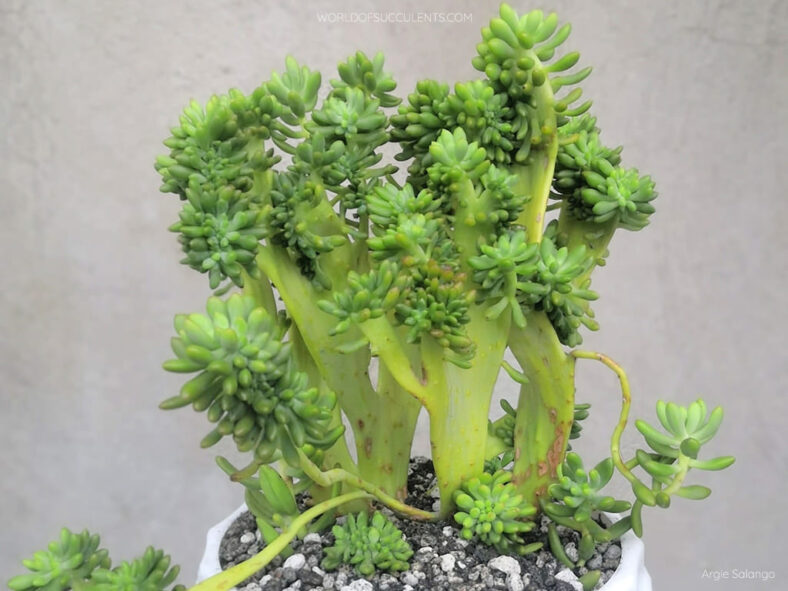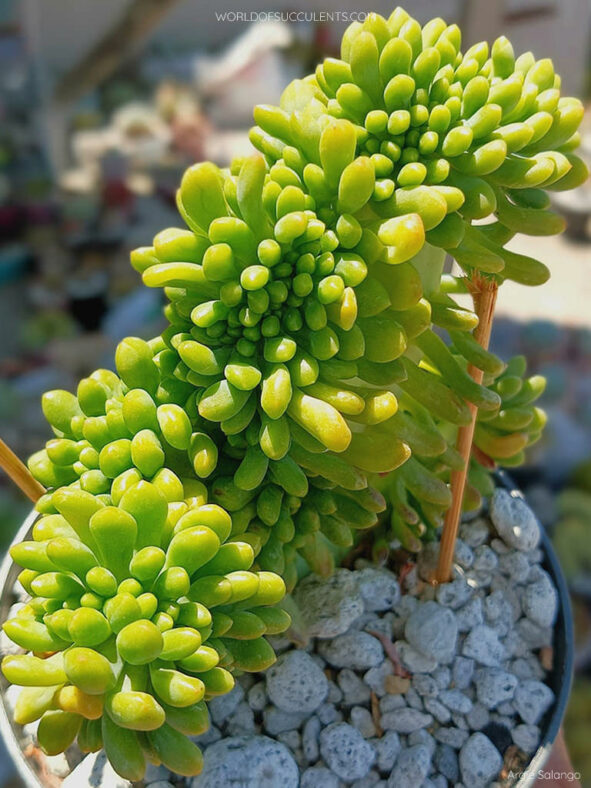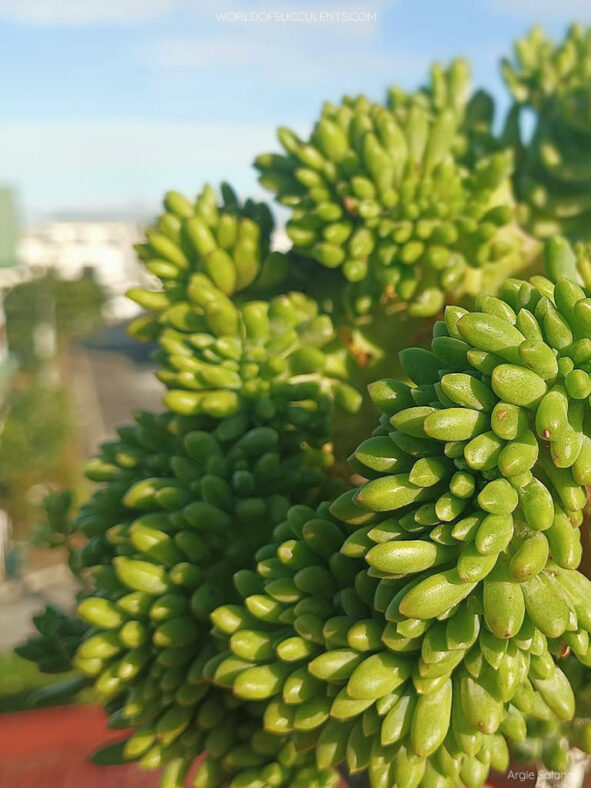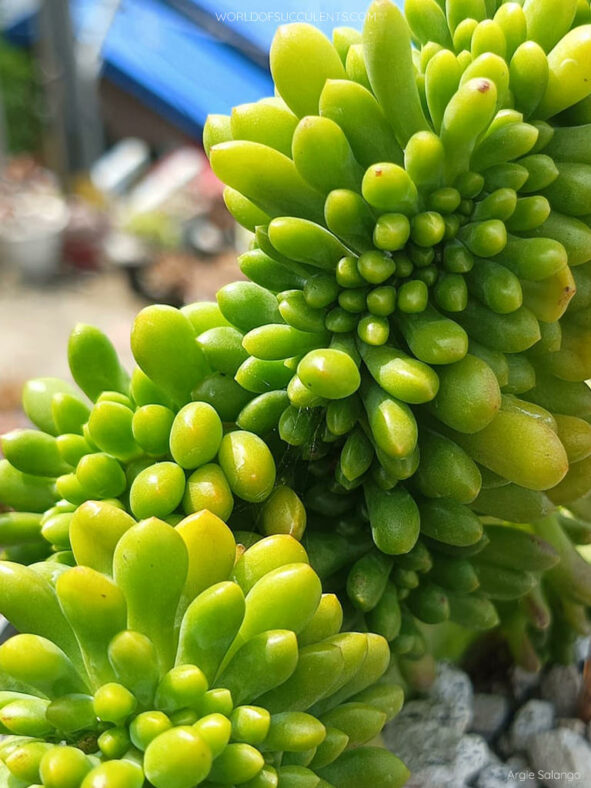Sedum corynephyllum f. cristatum is a small plant with unique sculptural shapes that catch the eye.
Scientific Name
Sedum corynephyllum f. cristatum
Accepted Scientific Name
Sedum corynephyllum Fröd.
Scientific Classification
Family: Crassulaceae
Subfamily: Sempervivoideae
Tribe: Sedeae
Genus: Sedum
Etymology
The formal epithet "cristatum" (pronounced kris-TAY-tum) means "tufted, crested, plumed."
Origin
Sedum corynephyllum f. cristatum is a form of Sedum corynephyllum selected for its mutated growth.
Description
Sedum corynephyllum f. cristatum is a fascinating succulent with fleshy, light green leaves tightly packed along flattened stems. The leaves often have reddish tips and are shorter and narrower than those of the normal form of Sedum corynephyllum. Each specimen has a unique shape, and while some growths are stable, others tend to revert to normal.

How to Grow and Care for Sedum corynephyllum f. cristatum
Light: Sufficient light is most important for growing a healthy plant. Sedum corynephyllum f. cristatum grows best in locations where it will enjoy the full sun for at least six hours daily, but will tolerate some shade. Place the plant near a sunny window or use artificial lights when growing indoors.
Soil: This plant does not tolerate waterlogged soil, so good drainage is essential to prevent root rot. Use a commercially available mix designed for succulents, or create your own.
Temperature: Sedum corynephyllum f. cristatum can tolerate a wide range of temperatures, making it an excellent choice for various climates. It grows best in USDA Plant Hardiness Zones 10a to 11b, with average minimum winter temperatures ranging from 30°F to 50°F (- 1.1°C to 10°C).
Watering: From spring to fall, water thoroughly and let the soil dry out before watering again. During the winter, water the plant just enough to keep it from shriveling. When watering, avoid getting the leaves, stems, and flowers wet.
Fertilizing: Feed a water-soluble fertilizer diluted to half the recommended strength during the growing season. However, feeding is unnecessary if you provide the plant with fresh soil annually.
Repotting: When Sedum corynephyllum f. cristatum outgrows its current pot, repot it into a larger one during the spring. Ensure the soil is dry before starting to repot.
Propagation: It is easy to propagate Sedum corynephyllum f. cristatum by taking leaf or stem cuttings during the growing season.
Learn more at How to Grow and Care for Sedum.
Toxicity of Sedum corynephyllum f. cristatum
Sedum corynephyllum f. cristatum is not listed as toxic for people, but can be mildly toxic to pets and children.
Links
- Back to genus Sedum
- Succupedia: Browse succulents by Scientific Name, Common Name, Genus, Family, USDA Hardiness Zone, Origin, or cacti by Genus
Photo Gallery
Click on a photo to see a larger version.


